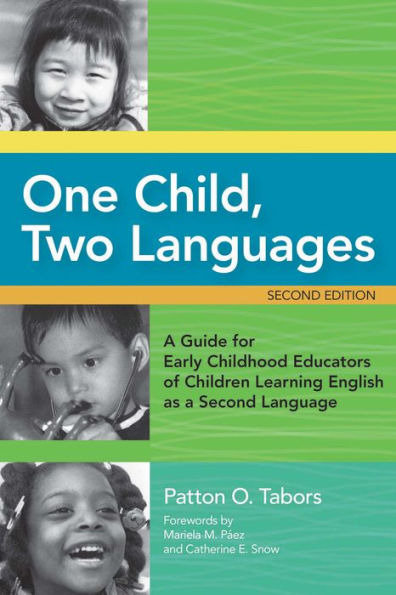Reflecting 10 years of dramatic change in early education—especially in critical areas like assessment and cultural diversity—the second edition of this bestseller gives teachers up-to-date research, usable information, and essential tools to meet the needs of second language learners in today's learning environments. Leading researcher Patton Tabors equips teachers with the foundation of knowledge they need to
Teachers will also get updates on all the key topics covered in the first edition, including working with parents, understanding the process of second-language acquisition, and using the curriculum and classroom organization to facilitate English language and literacy learning. Ideal for professional development, this book is the best tool a teacher can have to support the language and literacy development and school success of second language learners while honoring their home languages and cultures.
*English Language Learners Focus Group Report, 2002
Reflecting 10 years of dramatic change in early education—especially in critical areas like assessment and cultural diversity—the second edition of this bestseller gives teachers up-to-date research, usable information, and essential tools to meet the needs of second language learners in today's learning environments. Leading researcher Patton Tabors equips teachers with the foundation of knowledge they need to
Teachers will also get updates on all the key topics covered in the first edition, including working with parents, understanding the process of second-language acquisition, and using the curriculum and classroom organization to facilitate English language and literacy learning. Ideal for professional development, this book is the best tool a teacher can have to support the language and literacy development and school success of second language learners while honoring their home languages and cultures.
*English Language Learners Focus Group Report, 2002

One Child, Two Languages: A Guide for Early Childhood Educators of Children Learning English as a Second Language, Second Edition
256
One Child, Two Languages: A Guide for Early Childhood Educators of Children Learning English as a Second Language, Second Edition
256
Product Details
| ISBN-13: | 9781598574753 |
|---|---|
| Publisher: | Brookes Publishing |
| Publication date: | 04/07/2014 |
| Sold by: | Barnes & Noble |
| Format: | eBook |
| Pages: | 256 |
| File size: | 5 MB |
